
Introduction & Origins
Cyrtosperma johnstonii is a tropical plant native to the Solomon Islands in Oceania. Similar to its huge siblings C. merkusii and C. giganteum, it also has large, starchy rhizomes and gigantic leaves. This plant is grown across Southeast Asia as an ornamental, and despite its popularity, not too much is known about its origins or ecology. I decided to write quite a detailed plant profile in an attempt to condense as much information about this species as possible, so bear with me, it might get a bit heavy.
When young, its leaves have bright red veins, and as it grows older, it trades this colouration for sheer size. Its leaf blades or laminae can grow to over 1.5 metres in length, held up by towering, spiny pink and brown petioles. This description suggests a total height of 3 metres, but I would argue that I’ve seen plants taller than this in Singapore, with leaves over 1.5 metres long. This plant is variable in morphology and flowers at different sizes. I have seen small, stunted plants growing in full sun, holding onto their painted juvenile leaves whilst three metre tall plants unfurl gigantic, plain green leaves in dappled shade a few metres away.
I wouldn’t say it’s incredibly rare in cultivation but it certainly isn’t too common, despite its striking beauty. The only common name it has is “Singha Mora”, or สิงหโมรา in Thai. After a bit of research (and a lot of Google Translate), I found that this plant is grown in Thailand for its medicinal properties, and that extracts from this plant have promising anti-cancer properties. I also learned that it is supposed to keep spirits away, which is of some comfort as I type this next to one at 1am.
The exact origins of this species, along with its big sister Cyrtosperma merkusii, are shrouded in mystery. The earliest record I can find is from 1876, where Mr William Bull introduces it as “Alocasia johnsoni“. According to a 1988 paper by Dr Alistair Hay, an expert on all things Araceae, cultivated plants of Singha Mora are clones of single specimen collected from Buka Island, Solomon Islands. Volume 18 of The Gardener’s Chronicle also makes reference to a plant being imported from the Solomon Islands by William Bull. On my hunt for information, I came across a video of an apparently wild specimen in the rainforest of the Solomon Islands, found by French botanist Patrick Blanc, so there is a good likelihood of viable populations still existing in situ.
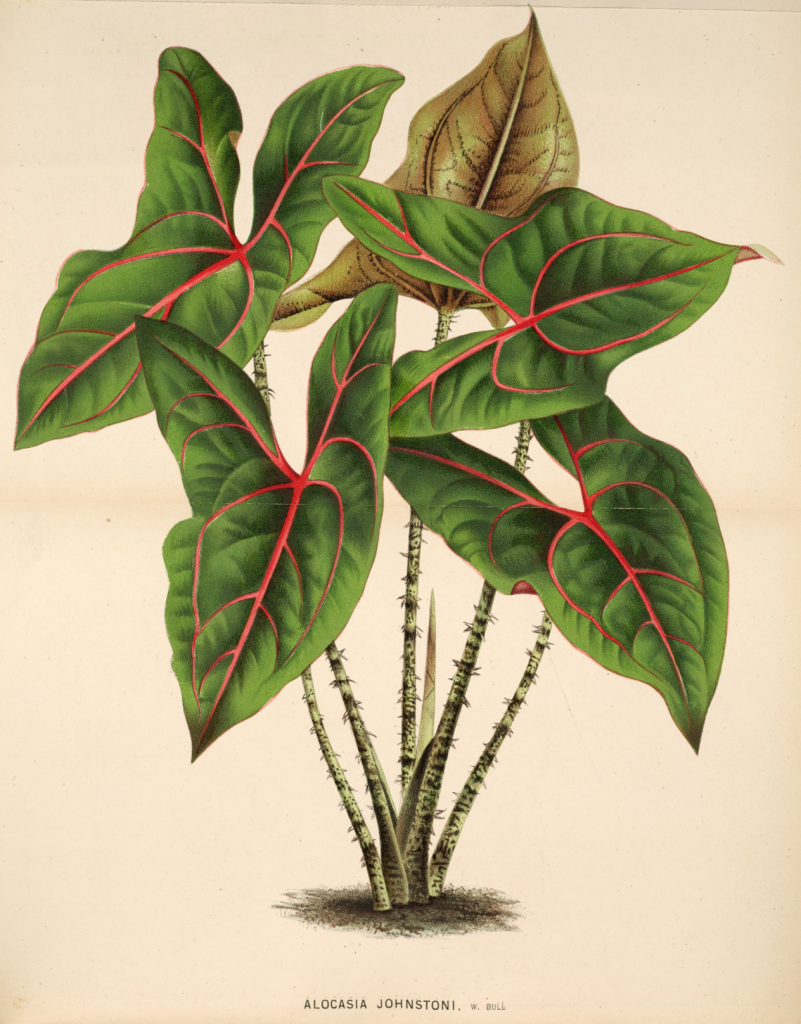


http://specimens.kew.org/herbarium/K000499264
Morphology
As previously mentioned, C. johnstonii is a very variable plant, despite the fact that most plants in cultivation are likely clones. Appearance varies with age and growing conditions. Plants usually grow in clumps with a dominant crown at the centre. They often produce suckers, although not as freely as C. merkusii.
Leaves
The laminae are almost always sagittate, or arrow-shaped. As the plant grows these change shape, with a general trend of the posterior lobes elongating and starting to look a bit like rabbit ears. For more mature plants, leaves are usually held upright, with the posterior lobes at the bottom and anterior lobe above. Younger plants seem less fussy in the way they orient their leaves, probably searching for light as they establish. Throughout their life, leaves can vary in proportion and shape.
Smaller plants usually display bright red veins, and are sometimes used in the aquarium trade, albeit rarely. These veins tend to fade as the plant gets older, although plants grown in full sun may never fully lose this colouration. Plants grown in deep shade can lose their red colouration completely apart from the petioles. Petioles are mottled with blotches of pink and brown, and are armed with upward-curving spines. Apart from growing in size, the petioles don’t change much as plants grow older.

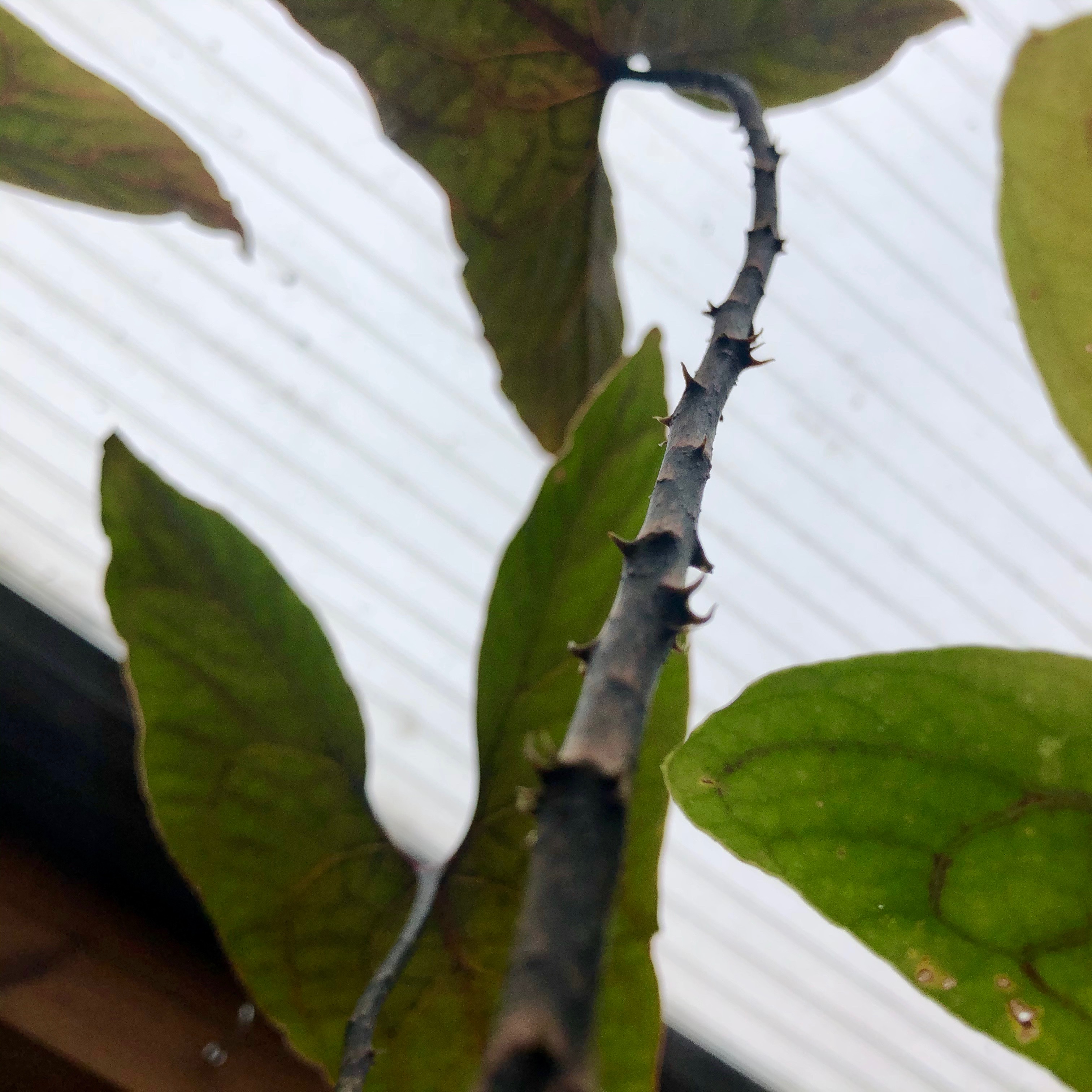
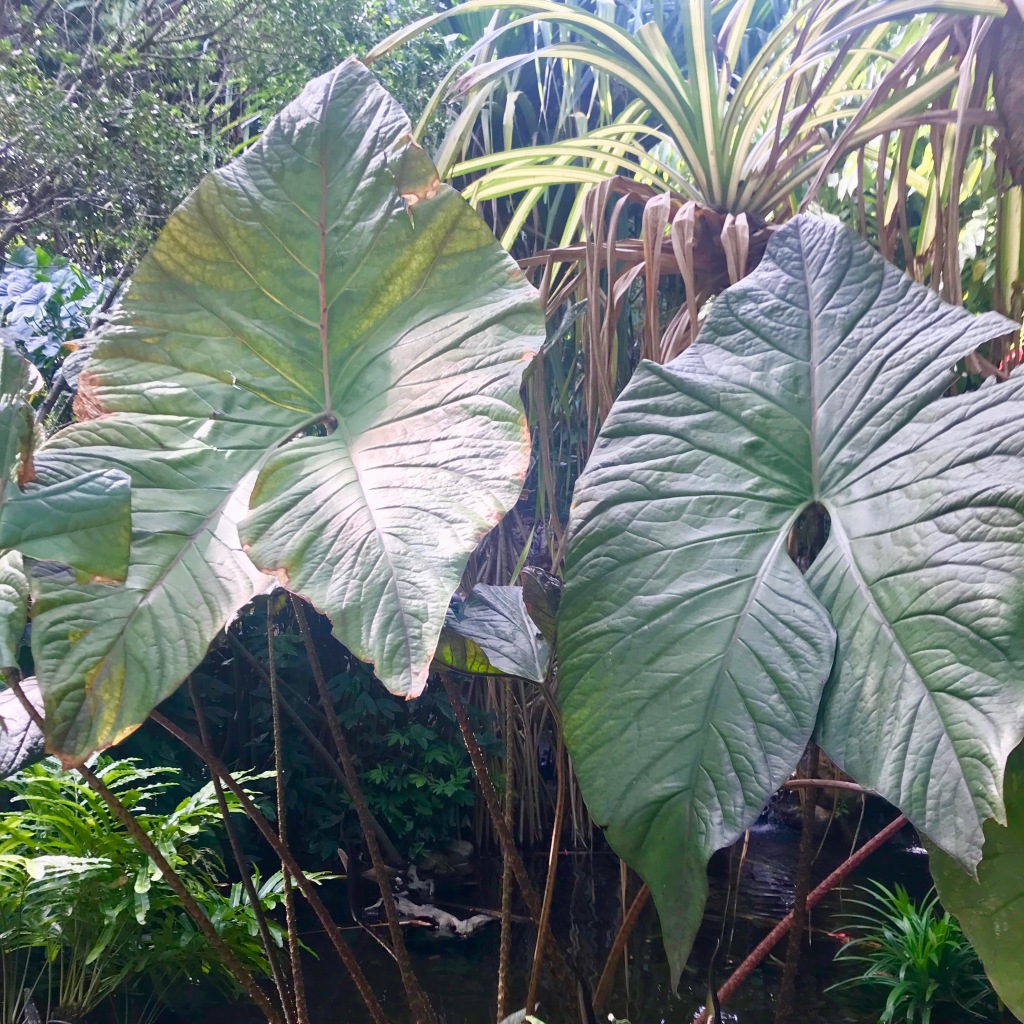

Rhizome and Roots
For the most part, rhizomes of this plant tend to stay below the soil. Unlike the closely related Lasia spinosa, which has creeping rhizomes that grow horizontally, this species has rhizomes which for the most part grow vertically and remain quite stout, similar to many Alocasia or Colocasia species. These rhizomes produce buds which can develop into suckers, very useful for propagation. Other Cyrtosperma species aren’t so generous when it comes to producing vegetative offspring, such as Cytosperma giganteum.
This species has fibrous roots, as with other monocots. They are tolerant of water inundation but is this is best practised in tropical climates where plants are robust enough.
Reproductive Parts
According to current information, plants in cultivation can only reproduce by vegetative suckers. It isn’t known whether it is because the species is completely infertile – which raises some questions, or whether it is self-infertile. I have seen a specimen with developing fruit before, but the stalk had bent over, so I imagine it was unsuccessful (see below).


The plant can flower from a relatively small size (compared to how big it can reach). Inflorescences vary in size to match the mother plant and are quite pretty; the spathes are dark purple on the exterior, with a greenish-cream interior. Flowers are pollinated by insects and are bisexual, meaning they have both male and female parts.
In January 2022, one of my plants produced an inflorescence. I’ve uploaded photos below.
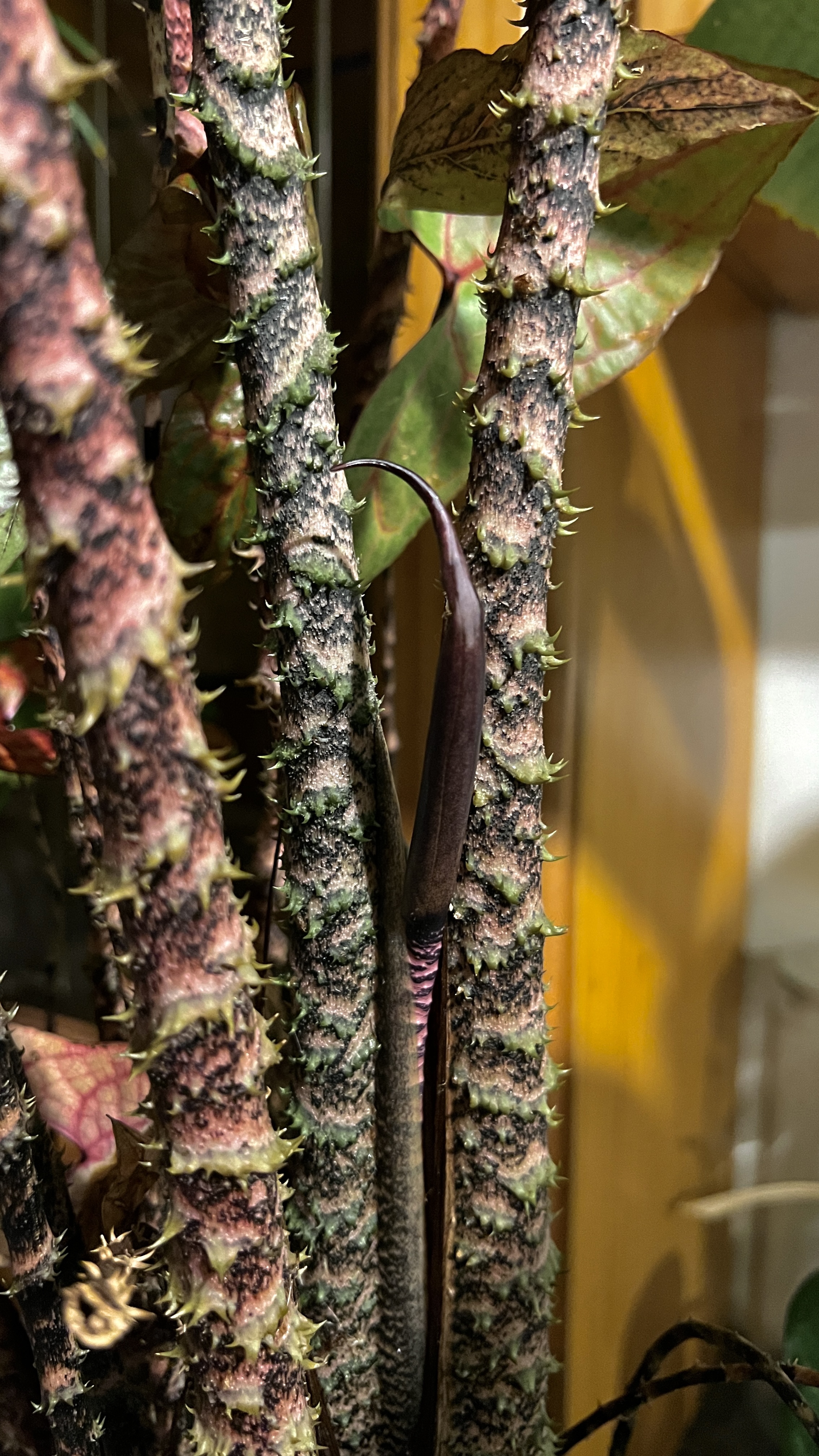

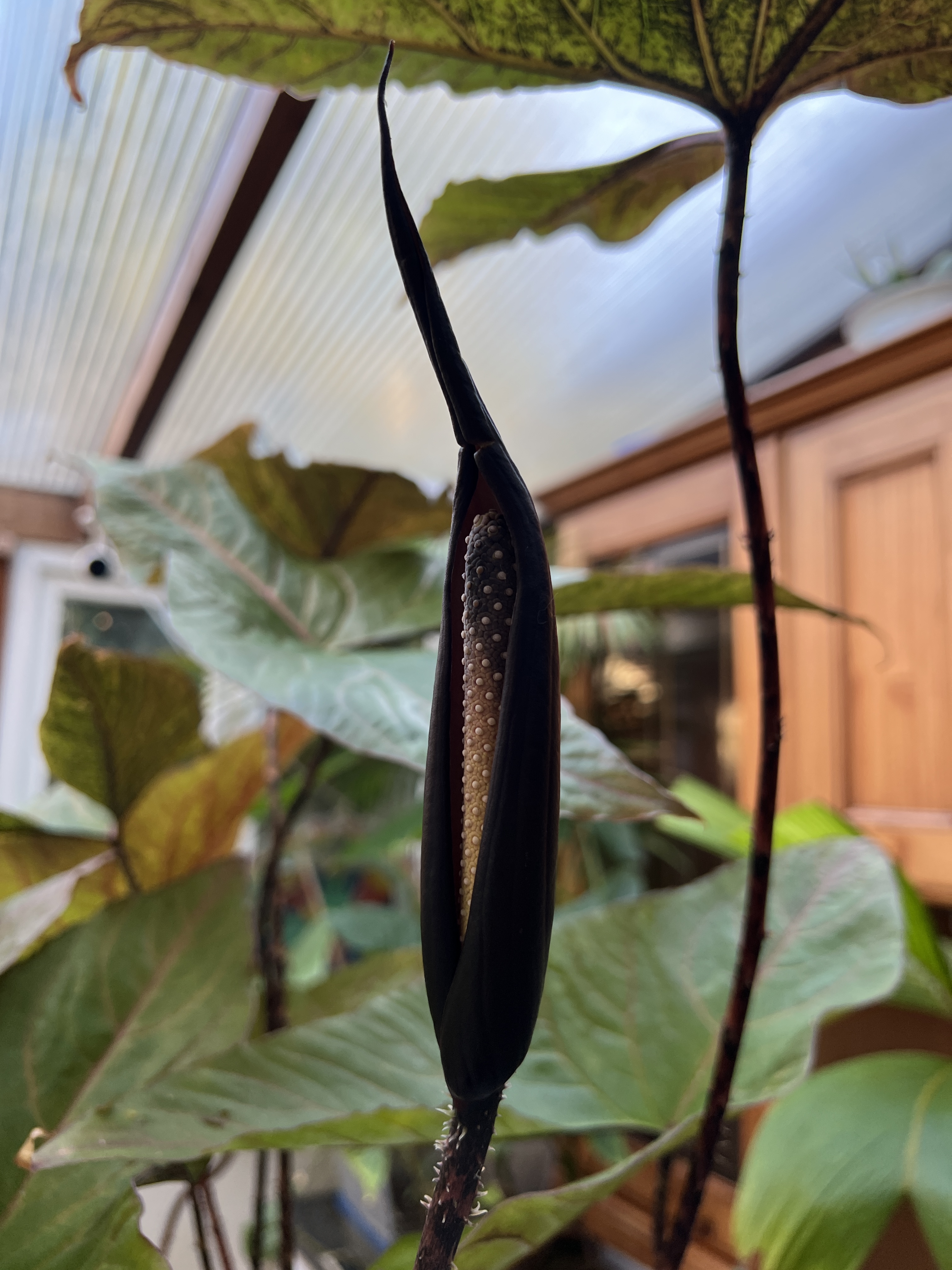
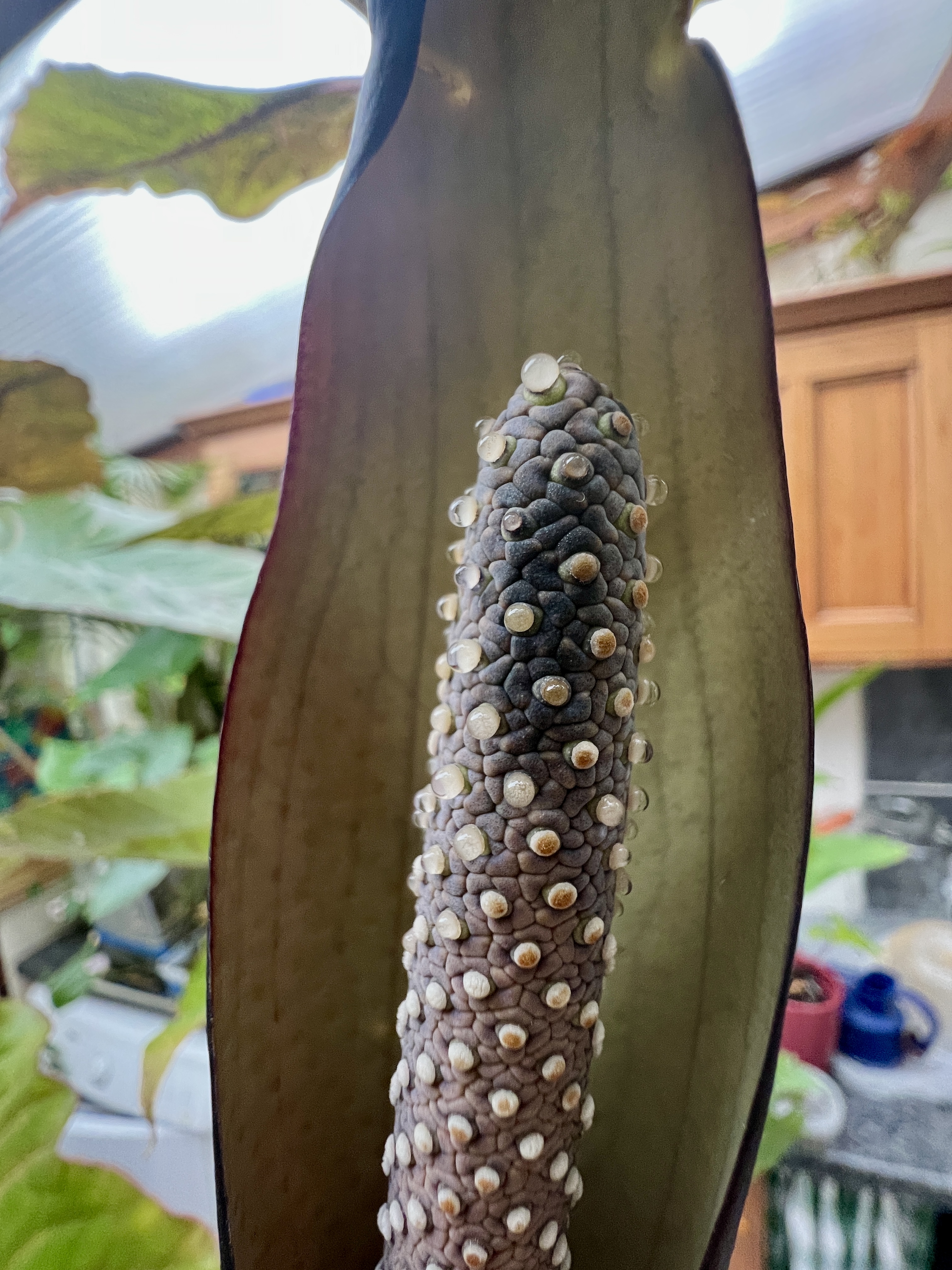
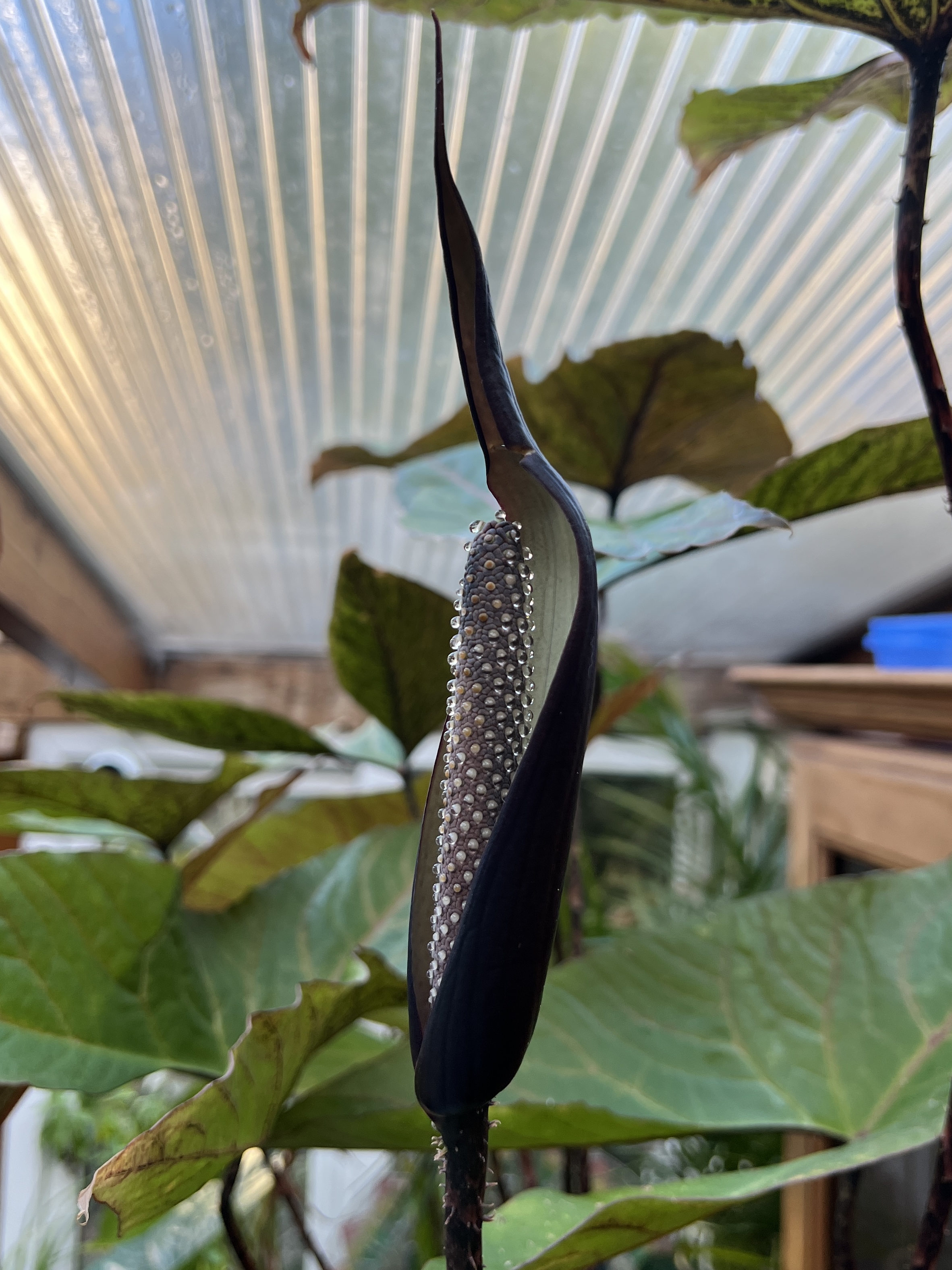
Culture
Light
I’ve found this plant to be tolerant of most light conditions. In deep shade, plants lose their colouration more quickly and produce more spindly growth as one would expect. Light or dappled shade seems to suit the plant very well, and this is where I have seen the biggest specimens. The leaves of these plants are a deep green colour, which can make them harder to recognise. Plants grown in full sun tend to develop a more yellowish tinge to the leaf blades. For my plants, I’ve noticed that leaves produced in summer are a bit smaller and yellower in colour. At this time of year, the sun falls directly on the plants for a few hours per day. In winter, the plants only receive indirect light and produce bigger, greener leaves.

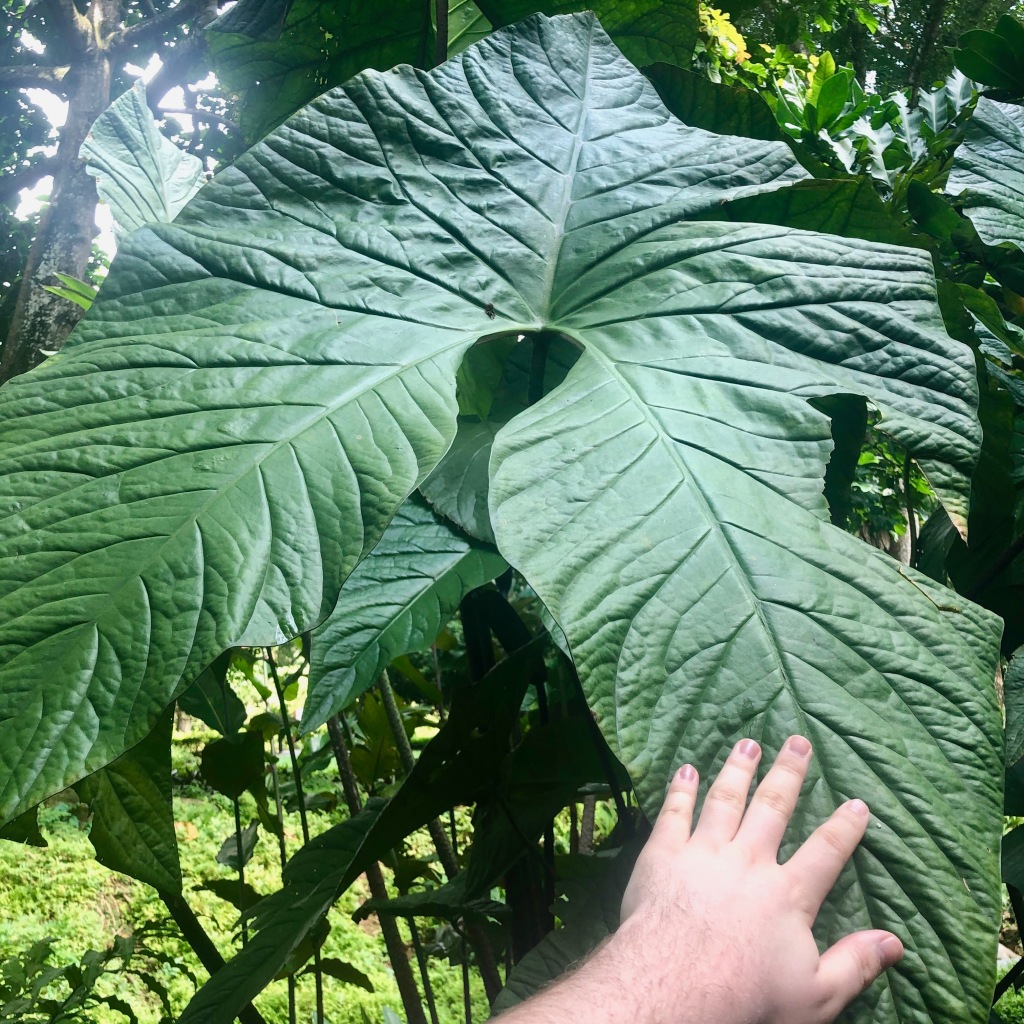
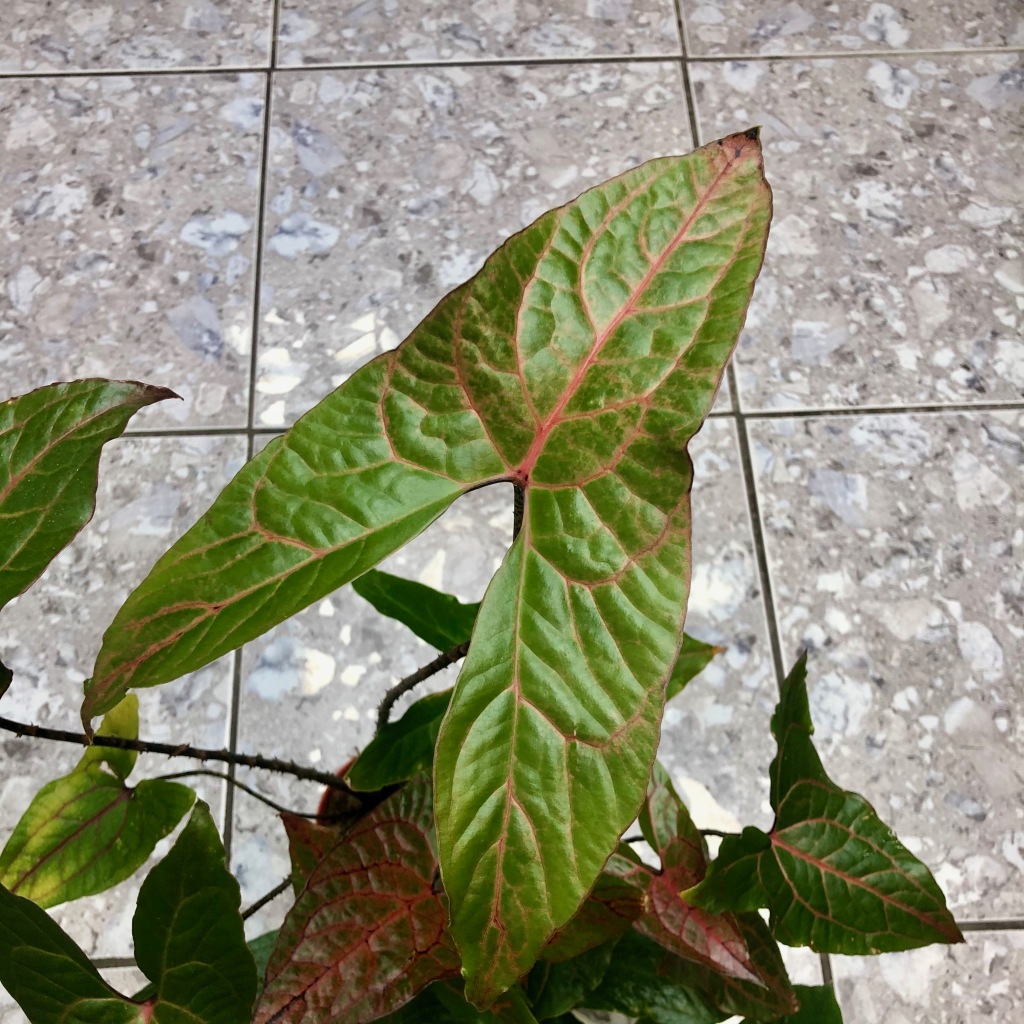

Temperature
This is a strictly tropical plant and does not do too well with extended periods below 18°C. I have found growth to be rapid here in the summer months where temperatures in my kitchen hit 25 degrees and above nearly every day. The most temperature sensitive parts of the plant are the roots and rhizome. When growing in a temperate climate, or even subtropical, it is crucial to keep them warm during cooler weather. I keep mine in a warm water bath at around 25-28°C, heated by a small aquarium heater. A heating mat will also work well, although care should be taken not to overheat the roots which can lead to problems of its own. Also, water baths warm the rootball more evenly, whereas heating mats often only keep the lower section of the rootball warm.
There is a good discussion here which I found to be extremely useful.
Water
There isn’t much, if any information on the habitat of C. johnstonii, but looking at the vast number of plants grown as marginals and bog plants it is safe to say that it loves water. I am also aware of plants being grown successfully under “normal” watering conditions in coconut chips. I let one of my plants dry out completely last week and it soon let me know, the whole plant wilted in a dramatic fashion and I was worried that I lost it. I soaked it in water and within a few hours it was back to normal. The roots didn’t show any damage, although I wouldn’t recommend putting it through that stress on a regular basis! As I live in a temperate climate, it can be risky to keep them too wet as it can encourage rotting. Young plants in particular seem to be more prone to sudden collapse so I will keep them on the drier side. In the water bath, each pot is held in a waterproof pot-holder to prevent the roots from becoming saturated with water. I then water them just enough to keep the sphagnum moist. I only soak them when going away for extended periods. In tropical climes and hothouses where daytime temperatures are above 25°C it seems they do very well when partially submerged in a pond. They seem to have an increased tolerance for aquatic conditions if the medium is inorganic and the water circulates through the roots. As of April 2020, I have been keeping a pot of these in a semi-hydroponic system and they are responding well.
Humidity
If grown in drier conditions, leaf blades may dry out and shrivel at the margins. Sometimes, it can spread and destroy much of the leaf! In most cases, isn’t very noticeable as the leaves are so busy with colour and texture anyway, but if it bothers you, you might want to think about changing the way you grow it. My ambient humidity ranges from about 50% to 80% and I still get leaves drying at the tips, even after spraying with anti-transpirant (di-1-p-menthene). However, I have had some success with semi-hydroponics in reducing leaf-tip burn, presumably due to increased availability of water. I think the bigger the leaves grow, the more difficult it is to prevent the margins from drying out.

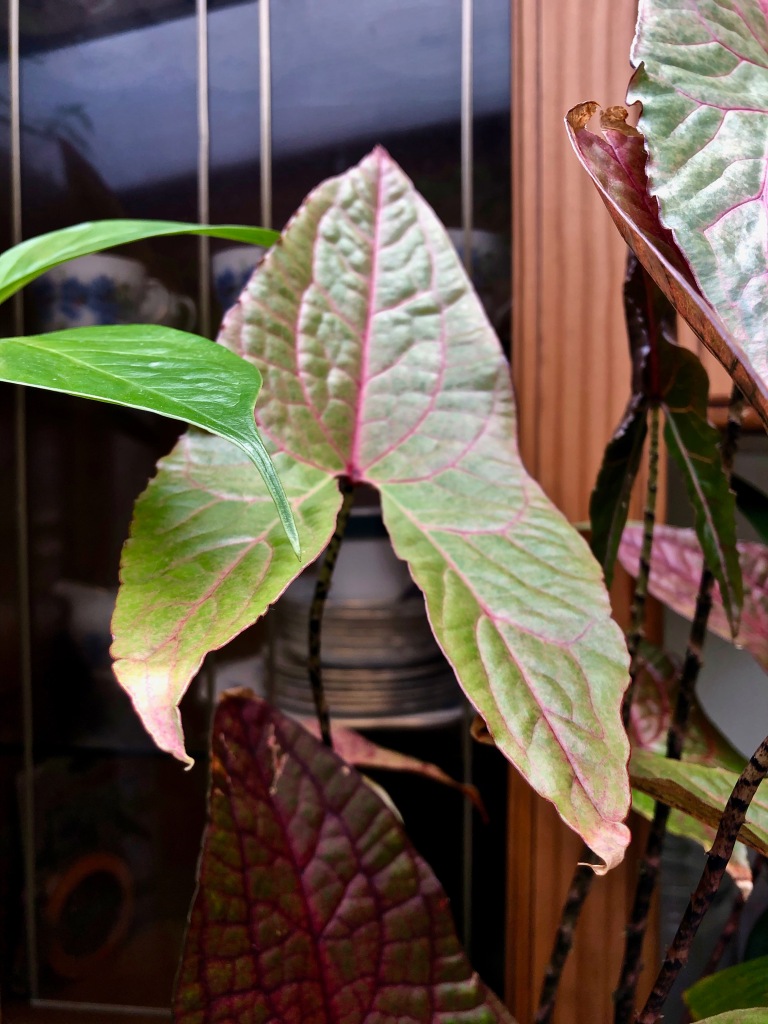
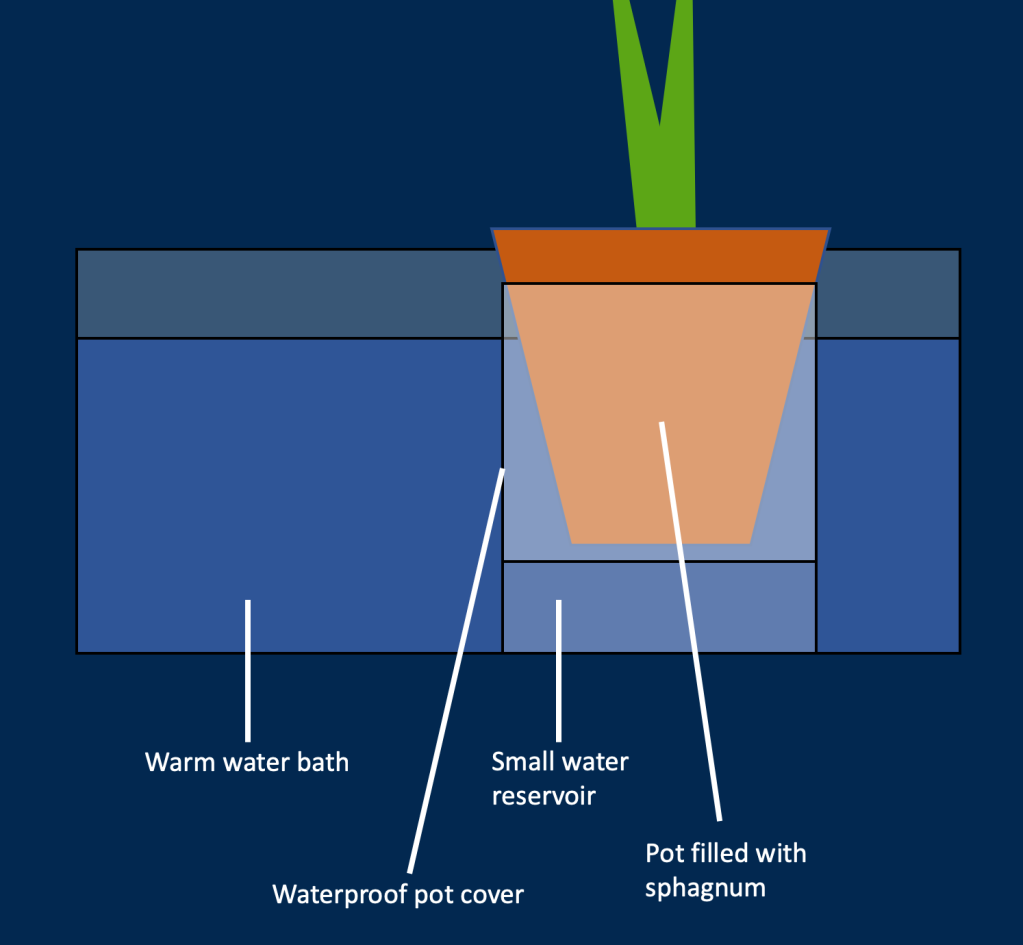
Growing Media
This plant seems to be quite tolerant of a range of growing media, although care should be taken to select the right one to suit your chosen watering regime and climate. A discussion on the subject, including the late, great Julian Boos’ recommendations is linked here. When small (<50cm), my plants are grown in pots of pure sphagnum over a small reservoir of water. The roots eventually reach down through the drainage holes and into the water. When growing in sphagnum, I’ve found it’s best not to drench as it can start to rot and suffocate the roots. I keep the moss moist, but not saturated. This way, air can reach the roots without compromising on moisture levels. If you don’t fancy fussing this much over a plant, they seem to do quite well in a 60:40 mixture of perlite and peat. The bottom two centimetres of the pot are filled with hydroleca and I sit it in a saucer of water. If you live in a hard water area, I’d recommend regular flushing as salt-buildup can be a problem with this method. A heating mat could also be used under pots instead of a water bath, but it only keeps the lower part of the roots warm, and I find the heat can be a bit too intense.
Update – August 2020
As my plants got bigger, I decided to convert one of my pots to semi-hydroponics. I replaced the sphagnum with a 60:40 mixture of hydroleca and perlite, and changed to one of those mesh pots made for pond plants. I then plunge the pot about two thirds of the way into a heated water bath. So far, at least during summer, this seems to be working very well. The coarse medium, meshed pot, and circulating aquarium powerhead prevent stagnation at the roots. Since planting, their growth rate has increased and they’re now outpacing my largest plant, which is kept in a mixture of perlite and . Another benefit I seem to be noticing is that this semi-hydroponic setup helps to prevent leaf burn at the tips as water uptake is better.
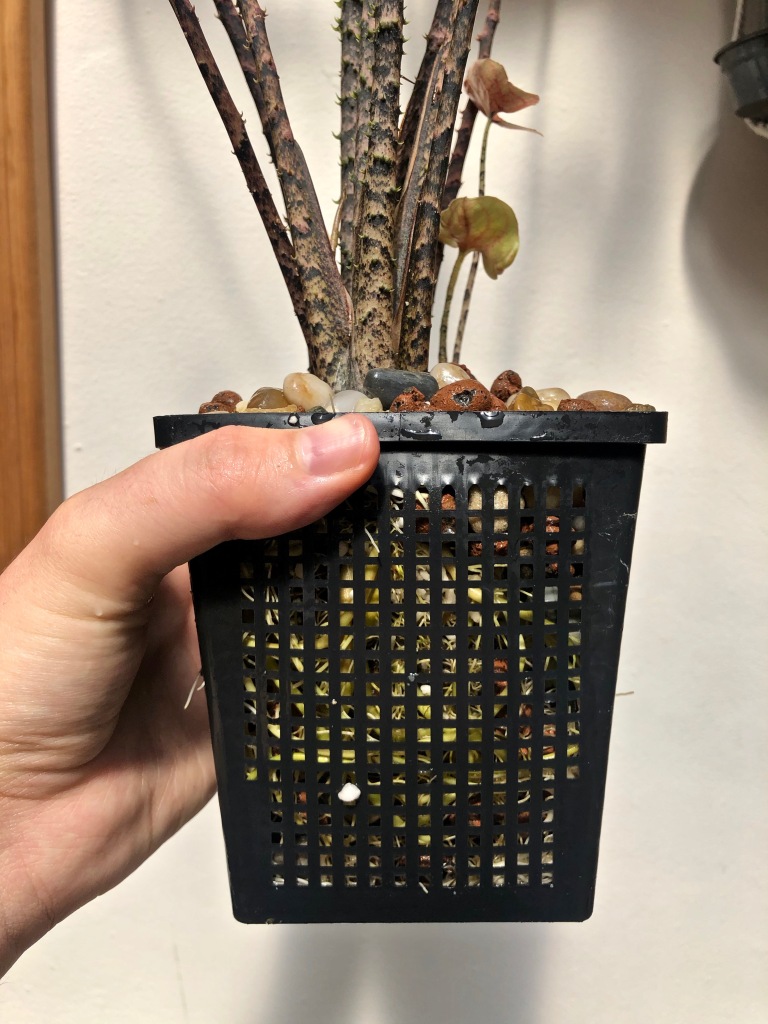

Propagation
The only propagation method I know of is separation of offsets. I find sphagnum to be the most reliable method of establishing these. It provides a perfect environment for fragile new roots, and its antimicrobial properties ward off rot. To achieve the perfect moisture level, moss should be soaked in water for 20 minutes and squeezed to remove the excess. Find a small pot, fill halfway with the moss and add the offset. Fill the pot to the top with more moss and place in a plastic bag in a warm, bright place for the plant to establish. Check regularly for rot without being too invasive, and ensure the moss is kept lightly moist. If you somehow find yourself with seed, this article by Peter Boyce provides invaluable sowing information.

So, hopefully you haven’t found this post too exhausting! I hope I’ve done this interesting plant some justice. I look forward to posting some updates as they grow.
Update – June 2021
My plants have grown well over the past year. I was a bit anxious about losing them during the winter months but they seemed pretty happy which was a relief. Sometimes the light levels in the kitchen get really low as it’s north facing.
I decided to take the aquarium heater and pump out of the water bath, keeping the water warm using a heat mat instead. Although the water is stagnant, it gets replenished every week or two and after six or so months, the plants are still doing well.
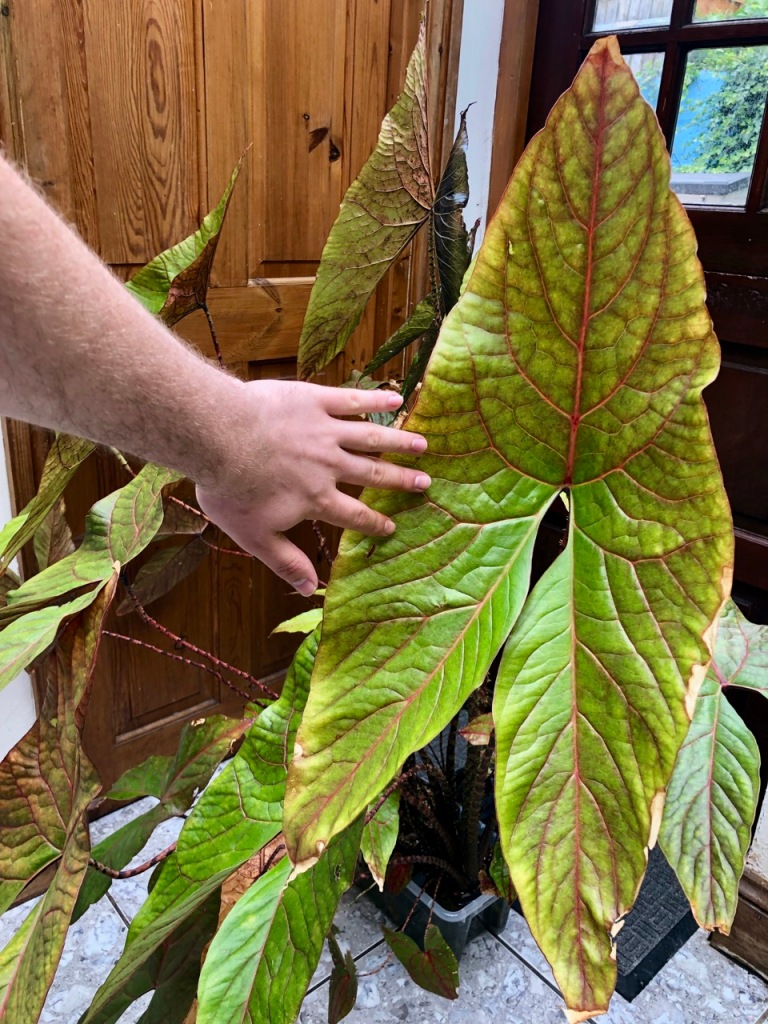



Update – February 2022
My largest plant has bloomed for the first time (see above). I am hoping to harvest pollen from it and freeze until one of my plants produces another inflorescence. I will also attempt to use some of this pollen cross-pollinate another Cyrtosperma species, should one bloom in the near future. Always worth a try!
so happy to have found this! just managed to acquire the plant(cyrtosperma johnstonii) for myself and was wondering what i should provide it with. thank you for putting so much information together(always waaay to hard to find)! 🙂
LikeLiked by 1 person
You’re welcome. Ah I’m excited for you, they’re amazing plants!
LikeLike
Hello! Very nice to see all this! I am writing an article on this plant, focussed on its origin (there are recent records of it being found wild in Solomon Islands, confirming what has long been suspected). Your photo of it in fruit is, as far as I know, the only one in existence and I was wondering if I could include it [preferably without the red circle 🙂 ] in the article (with suitable acknowledgements of course). Thanks in anticipation. Best wishes. Alistair Hay. PS the downward pointing fruiting head is probably normal — most Cyrtospermas do this.
LikeLiked by 1 person
Hi Alistair!
That sounds fascinating, of course you’re very welcome to use it. I’ll send you the original photo. What’s the easiest way to get it to you? Ah thank you for letting me know, I wonder if the seed were viable. I wish I could go back and take some better photos!
Cheers,
James
LikeLike
Thank so much, James! Email would be fine 🙂 I assume you are able to see the address I logged in with?
LikeLike
You’re very welcome! Unfortunately it’s only letting me see your name. What’s your email address?
LikeLike
alistairjmhay@hotmail.com
LikeLiked by 1 person
I just got one of these plants and this is the most comprehensive write-up I’ve been able to find. Super helpful!
LikeLiked by 1 person
Thanks for your kind comment! I am so glad it helped.
LikeLike
Hi, I’ve received 2 tubers from Thailand. What method would you recommend using to make them sprout? I appreciate your help. Thanks.
LikeLike
Hi! Sorry for my late reply. I would recommend keeping in slightly moist sphagnum. It worked really well for me!
LikeLike
I truly prize your work, Great post.
LikeLiked by 1 person
Thank you so much for this helpful post. I was debating between sphagnum and semi-hydro. I’ve had a lot of success with other plants in semi-hydro but none of are in a heated water bath. This will be fun and exciting to see how the plant does!
LikeLiked by 1 person
I’m excited for you! Both have worked well for me, although as the plants get bigger, semi-hydro seems to work a treat. Keeping the water warm makes a huge difference and the plants will be far less fussy about what medium they’re planted in. Good luck!
LikeLike
Your post saved my bulb. I follow your method to the letter. Thank you!
LikeLiked by 1 person
You are welcome. I am so happy to hear this! I hope it’s growing well for you 🙂
LikeLike
I just got one plant like that, but my seller called it alocasia avatar. Are these one and the same?
LikeLike
Sorry for my late reply, yes I think it is! I’ve also seen it for sale as Alocasia “Blackjack”
LikeLike
Hello! I am about to delve into cryptosperma, and your article was perfect! Thank you for all thr wonderful advice! I can’t wait to read more
LikeLiked by 1 person